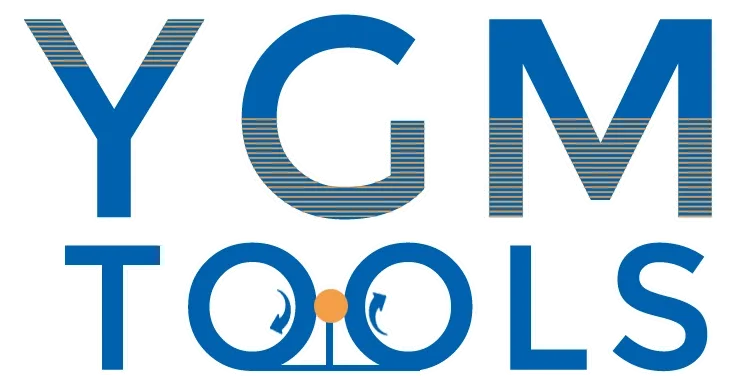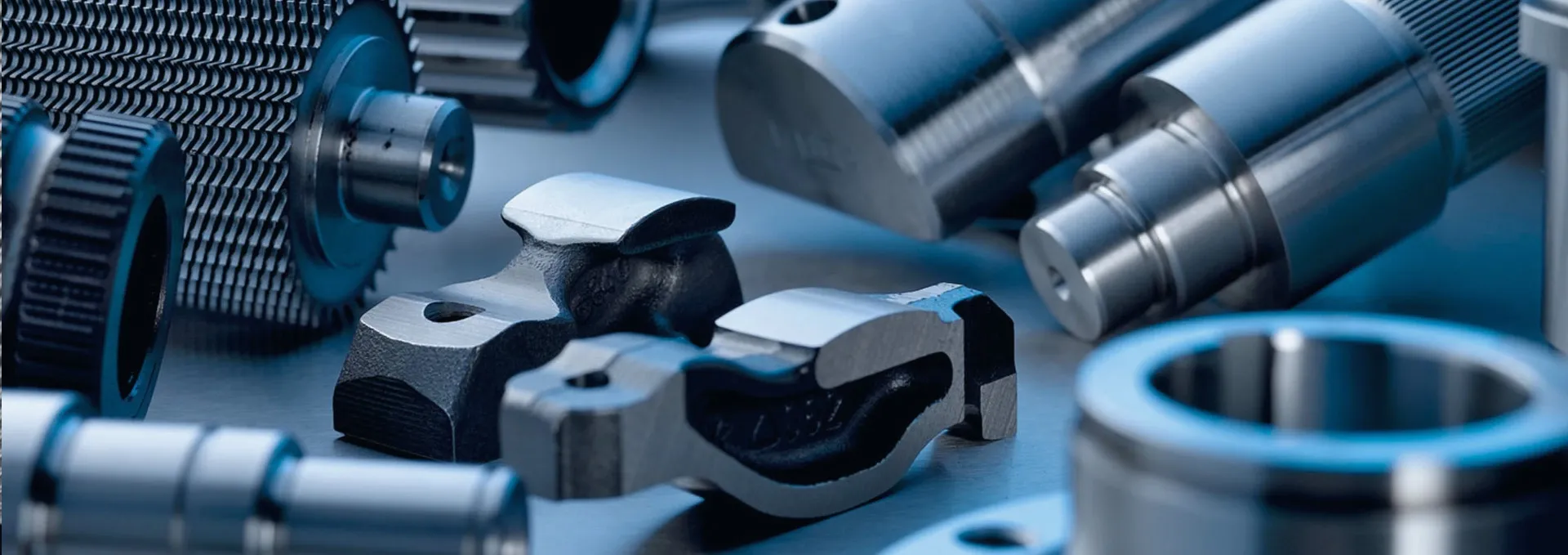Thread Rolling Tools: Precision & Durability for Optimal Results
The Strategic Role of Thread Rolling Tools in Modern Manufacturing
In the highly competitive landscape of global manufacturing, precision, efficiency, and material integrity are paramount. Central to achieving these objectives in fastener and component production is the advanced technology of thread rolling. At its core, the thread rolling tool stands as a critical component, driving cold-forming processes that reshape material without material loss, significantly enhancing the mechanical properties of threaded parts. This method, contrasting sharply with traditional cutting, offers unparalleled benefits in terms of strength, fatigue resistance, and surface finish. Industry trends indicate a sustained growth in demand for highly durable and precise fasteners across sectors like automotive, aerospace, construction, and renewable energy, where failure is not an option. The continuous innovation in materials science and machine design directly impacts the capabilities and longevity of these essential tools, pushing boundaries for higher throughput and tighter tolerances.
The evolution of thread rolling technology is deeply intertwined with the broader advancements in automation and material engineering. Modern manufacturing demands tools capable of handling a diverse range of materials, from standard steels to high-strength alloys and non-ferrous metals, all while maintaining exceptional performance. This necessitates a deep understanding of metallurgy, heat treatment, and precision machining in the production of the thread rolling tool itself. Manufacturers are increasingly seeking solutions that offer not only superior operational lifespan but also consistent quality output, minimizing scrap rates and optimizing production costs. This comprehensive guide will delve into the intricacies of these indispensable tools, exploring their manufacturing, technical specifications, diverse applications, and the strategic advantages they bring to a multitude of industrial operations, including their critical role in equipment such as the flat die thread rolling machine and the hydraulic thread rolling machine.
Precision Engineering: The Manufacturing Process of a Thread Rolling Tool
The production of a high-performance thread rolling tool is a sophisticated multi-stage process, demanding meticulous attention to detail at every step to ensure accuracy, durability, and a prolonged service life. It begins with the selection of premium-grade tool steels, typically high-speed steels (HSS) or specialized alloy steels like D2 or M2, known for their exceptional hardness, wear resistance, and toughness. The initial material preparation often involves hot rolling or forging to establish a sound internal grain structure, followed by annealing to prepare the material for subsequent machining. For specialized applications requiring extreme durability, some tools might undergo advanced powder metallurgy processes to create a very fine and uniform microstructure, enhancing overall performance and wear resistance in demanding cold-forming operations.
Subsequent stages involve precision CNC machining, where the intricate thread profiles are cut into the tool blank with sub-micron accuracy. This step is critical, as the geometry of the tool directly dictates the quality and precision of the rolled thread on the workpiece. After machining, the tools undergo a series of specialized heat treatments, including hardening, quenching, and tempering, to achieve the required Rockwell hardness (typically in the range of HRC 60-65) and optimize their metallurgical properties for wear resistance and fatigue strength. Surface treatments, such as nitriding, PVD (Physical Vapor Deposition), or CVD (Chemical Vapor Deposition) coatings (e.g., TiN, TiCN), are often applied to further enhance surface hardness, lubricity, and corrosion resistance, extending the tool's lifespan and improving the quality of the rolled threads, especially for applications in harsh environments like petrochemical or wastewater treatment, where anti-corrosion properties are crucial.
Quality control is integrated throughout the entire manufacturing process, adhering strictly to international standards such as ISO (International Organization for Standardization) and ANSI (American National Standards Institute). These inspections involve precise dimensional measurements, profile checks using optical comparators or profile projectors, and material hardness testing. Non-destructive testing methods like eddy current or ultrasonic inspection may also be employed to detect any subsurface defects. This rigorous quality assurance ensures that each thread rolling tool meets stringent performance criteria, contributing to energy efficiency in machine operation by reducing friction and enhancing part consistency. The typical service life of a well-maintained tool can extend into millions of rolled pieces, depending on material, application, and maintenance.
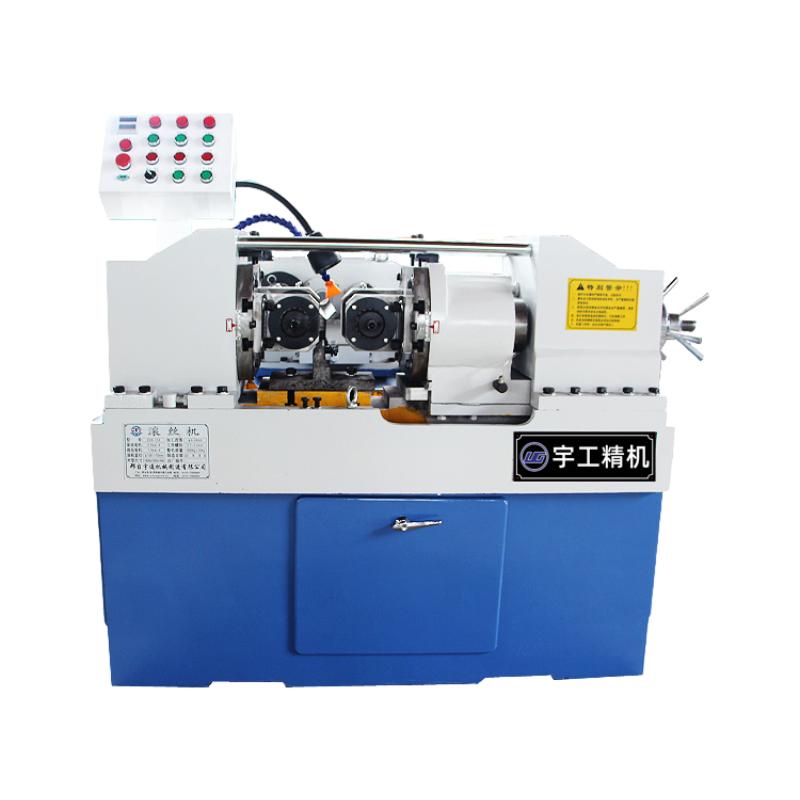
Key Technical Parameters and Specifications of Thread Rolling Tools
Understanding the technical parameters of a thread rolling tool is essential for selecting the correct die for a specific application and for optimizing machine performance. These parameters dictate the tool's compatibility with various materials, thread types, and machine configurations. The most critical specifications include the tool's material composition, which directly influences its durability and resistance to wear, heat, and impact. For instance, high-speed steel tools are excellent for general applications, while carbide inserts are preferred for very hard materials or extremely long production runs due to their superior hardness and wear resistance. The specific thread profile, whether it's Metric, Unified (UNC/UNF), ACME, or others, must precisely match the desired output.
Key dimensions such as diameter, width, and helix angle are paramount. The helix angle, in particular, must be precisely matched to the pitch of the thread being rolled to ensure smooth engagement and optimal material flow during the cold-forming process. Pitch diameter accuracy is also crucial, impacting the fit and strength of the final threaded component. Furthermore, surface roughness specifications for the tool are vital; a smoother tool surface reduces friction and heat generation during rolling, leading to better thread quality and extended tool life. Manufacturers often provide detailed specification sheets, which include data on heat treatment, hardness ratings, and recommended operating conditions for their specific thread rolling tool product lines. Below is a table illustrating typical parameters for a range of thread rolling tools.
Typical Thread Rolling Tool Specifications
| Parameter | Description | Typical Range/Value |
|---|---|---|
| Tool Material | High-Speed Steel (HSS), Cold Work Tool Steel (D2, M2), Carbide | HSS: M2, M42; Alloy: D2; Carbide Grades |
| Hardness (HRC) | Rockwell Hardness Scale C, post-heat treatment | 60-65 HRC for Steel; 88-92 HRA for Carbide |
| Surface Coating | Applied to enhance wear resistance and lubricity | TiN, TiCN, AlTiN, DLC, Nitriding |
| Thread Profile Standards | Common thread forms for various applications | Metric (M), Unified (UNC, UNF), ACME, Whitworth, Trapezoidal |
| Pitch Range (mm / TPI) | Applicable thread pitch range for the tool | 0.5mm - 6.0mm (Metric); 6 TPI - 80 TPI (Imperial) |
| Tool Life (Estimated) | Number of parts produced before significant wear | 1 Million to 10 Million+ cycles (material dependent) |
| Tolerance Class | Precision level of the tool itself | ISO Class 6g, 6H, 4h, 4g, etc. |
Note: These values are typical and may vary based on specific tool design, manufacturer, and application requirements.
Diverse Applications and Strategic Advantages Across Industries
The versatility of the thread rolling tool makes it indispensable across an extensive array of industrial sectors. In the automotive industry, for example, it is widely used to produce high-strength bolts, studs, and specialized fasteners for engine components, chassis, and safety systems, where the enhanced fatigue resistance provided by cold-formed threads is crucial for operational safety and longevity. Similarly, in the aerospace sector, where component integrity is paramount, thread rolling ensures the critical performance of fasteners used in airframes, propulsion systems, and landing gear. The absence of material removal means no cut-off burrs or weakened grain structures, leading to superior stress distribution and resistance to vibration-induced loosening.
Beyond conventional manufacturing, the thread rolling tool is vital in heavy industries such as petrochemical, where it's employed for producing highly reliable threaded components for valves, pipelines, and structural supports that must withstand extreme pressures, temperatures, and corrosive environments. The cold working process compacts the grain structure, making the surface harder and more resistant to corrosion and wear, which is a significant advantage in industries like metallurgy and water supply and drainage systems. The construction sector also benefits immensely from thread rolling, utilizing it for rebar couplers, anchor bolts, and structural fasteners, ensuring the long-term stability and safety of large-scale infrastructure projects. The process is inherently more energy-efficient than traditional cutting methods, contributing to reduced operational costs and a smaller environmental footprint for manufacturers.
The technological advantages of using a thread rolling tool extend to economic and performance benefits. Thread rolling machines, including the highly efficient Automatic nut and bolt threading rod thread rolling machine, minimize material waste, as no chips are produced, leading to significant cost savings on raw materials. The increased strength and durability of rolled threads often allow for the use of smaller diameter fasteners, reducing material consumption further. Furthermore, the process improves surface finish, which can enhance resistance to galling and seizure during assembly. The reliability and consistency of output achieved through thread rolling reduce the need for secondary finishing operations and minimize defective parts, streamlining production lines and enhancing overall manufacturing productivity.
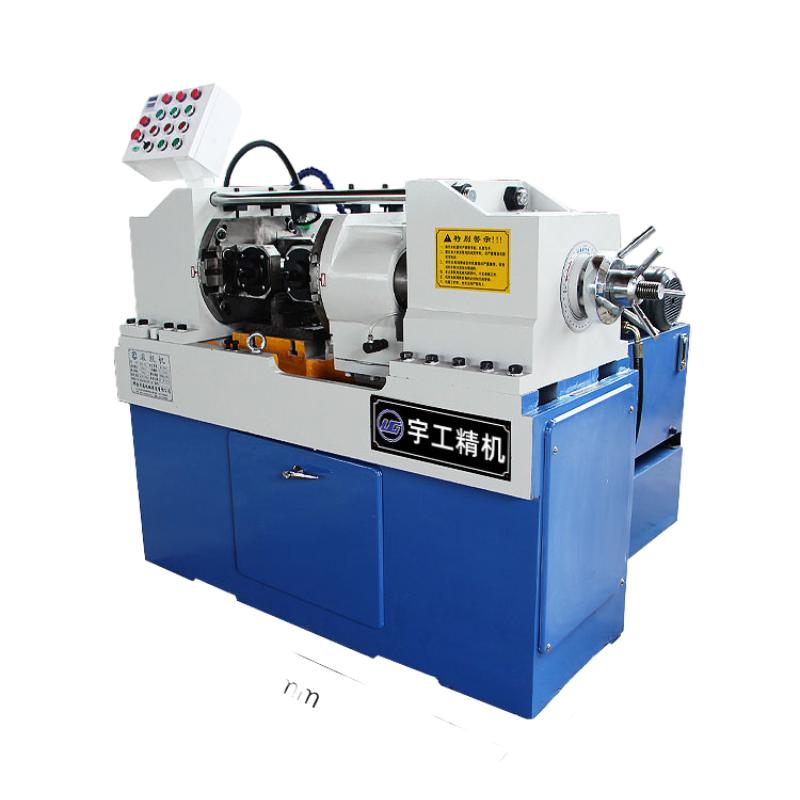
Manufacturer Comparison and Machine Type Advantages
When investing in thread rolling technology, understanding the nuances between different machine types and manufacturers is crucial. The market offers a variety of thread rolling machines, each with specific advantages. The flat die thread rolling machine is renowned for its high production rates and robustness, making it ideal for mass production of standard fasteners. It operates by pressing a workpiece between two flat dies, one stationary and one reciprocating, to form the threads. This method is highly efficient for high-volume production of bolts, screws, and studs, often integrated into automated lines.
For specialized applications requiring greater flexibility or for threading long rods and larger diameters, the hydraulic thread rolling machine offers superior control and force distribution. These machines utilize hydraulic pressure to bring the rolling dies into contact with the workpiece, providing precise control over the rolling force and speed. This makes them exceptionally suitable for rolling threads on heat-treated materials, hollow parts, or components requiring very precise thread forms. Furthermore, the small thread rolling machine caters to niche markets or prototyping needs, offering a compact footprint and often more economical entry point for businesses with lower volume requirements or specialized small-batch production.
When evaluating manufacturers for your specific needs, consider their track record, adherence to international quality standards (like ISO 9001), and breadth of product offerings. Leading manufacturers differentiate themselves by investing in R&D, offering advanced features such as CNC control for precision adjustments, automatic loading systems, and integrated inspection capabilities. Look for companies with established service networks and comprehensive technical support, as downtime can be costly. The choice of machine and manufacturer profoundly impacts the efficiency, precision, and economic viability of your threading operations. Our Automatic nut and bolt threading rod thread rolling machine, for example, combines high automation with robust performance, making it a competitive choice for a wide range of production demands.
Comparison of Thread Rolling Machine Types
| Feature | Flat Die Thread Rolling Machine | Hydraulic Thread Rolling Machine | Small Thread Rolling Machine |
|---|---|---|---|
| Operation Principle | Reciprocating flat dies | Hydraulic pressure for radial die movement | Various (often 2-die or 3-die, smaller scale) |
| Production Volume | Very High (Mass Production) | Medium to High (Precision & Flexibility) | Low to Medium (Batch Production, Prototyping) |
| Workpiece Diameter Range | Typically smaller to medium (M2-M24) | Wide range, including large diameters (M5-M100+) | Generally smaller (M1-M12) |
| Material Versatility | Standard steels, some non-ferrous | High-strength alloys, heat-treated materials, sensitive metals | Soft to medium-hard materials |
| Setup Time | Relatively quick for standard parts | Longer due to precision adjustments | Varies, can be quick for simple setups |
| Cost (Investment) | Medium to High | High | Low to Medium |

Customization, Service Excellence, and Trusted Partnership
Recognizing that every industrial application presents unique challenges, leading providers of thread rolling tool and machine solutions offer extensive customization capabilities. This includes tailor-made die designs for specific thread forms, non-standard materials, or unique part geometries. Customization might involve adjusting helix angles, modifying thread profiles for specific material flow characteristics, or applying specialized coatings to meet stringent environmental or operational demands. Our engineering team collaborates closely with clients, leveraging decades of experience in cold forming technology to develop bespoke solutions that precisely align with production requirements and performance criteria. This consultative approach ensures that clients receive not just a product, but a optimized system designed for their specific needs, from the initial design phase through to implementation and beyond.
Beyond product customization, a commitment to service excellence underpins long-term client relationships. This encompasses comprehensive technical support, including installation assistance, operator training, and preventative maintenance programs designed to maximize machine uptime and prolong the lifespan of the thread rolling tool. Our service engineers are equipped with profound expertise, capable of diagnosing complex issues and providing timely, effective solutions. We maintain a robust inventory of spare parts, ensuring prompt availability to minimize any potential disruption to your production schedule. This dedication to post-sales support is a testament to our commitment to being a trusted partner in your manufacturing success, ensuring your Automatic nut and bolt threading rod thread rolling machine operates at peak efficiency year after year.
Our track record of providing high-quality thread rolling solutions for over 20 years, coupled with strict adherence to ISO 9001:2015 quality management standards, underscores our authority and trustworthiness in the industry. We pride ourselves on transparent operations, clear communication regarding delivery cycles, and steadfast warranty commitments that protect your investment. Client testimonials and case studies consistently highlight improved part quality, reduced cycle times, and significant cost savings achieved through our tailored solutions. Our partnership approach extends beyond mere transactions; we aim to integrate seamlessly into your supply chain, offering continuous improvement suggestions and adapting to evolving industry demands.
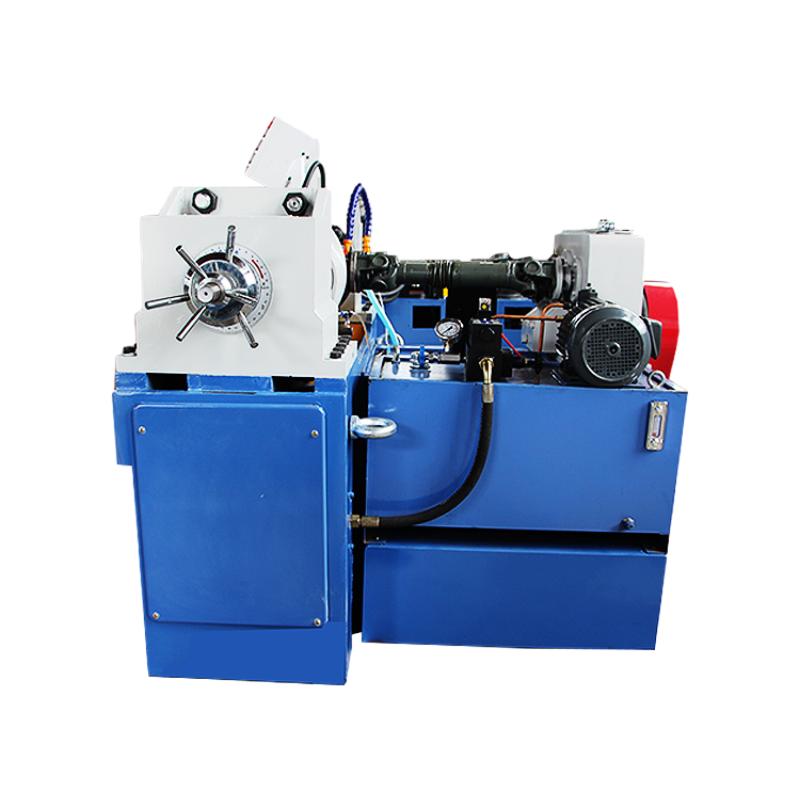
Frequently Asked Questions (FAQ)
Q1: What is the primary advantage of cold-formed threads using a thread rolling tool over cut threads?
A1: The primary advantage lies in the enhanced mechanical properties of cold-formed threads. Unlike cut threads, which remove material and interrupt the grain structure, thread rolling rearranges the material's grain flow, compressing it to form the thread profile. This process work-hardens the material, leading to significantly increased tensile strength, shear strength, and most notably, fatigue resistance. The rolled surface also becomes smoother and harder, reducing susceptibility to stress concentrations, galling, and corrosion, making the parts more durable and reliable in demanding applications.
Q2: How do I select the correct thread rolling tool for my application?
A2: Selecting the correct thread rolling tool involves several factors: the material of the workpiece, the desired thread form (e.g., Metric, UNC, ACME), the pitch diameter, and the machine type (e.g., flat die, hydraulic, planetary). Consideration must also be given to the required production volume and the desired surface finish. It is advisable to consult with an experienced thread rolling expert or the tool manufacturer, who can recommend the optimal die material, coating, and geometry based on your specific application parameters and operational goals.
Q3: What maintenance is required for thread rolling tools?
A3: Regular maintenance is crucial to maximize the lifespan and performance of your thread rolling tool. This includes routine cleaning to prevent chip buildup, proper lubrication during operation, and periodic inspection for signs of wear or damage. Tools should be stored in a dry, protected environment to prevent corrosion. When wear is detected, some tools can be re-ground or re-profiled by specialized services to extend their life further. Following manufacturer guidelines for tool care and replacement schedules is highly recommended.
Q4: What is the typical delivery cycle for custom thread rolling tools?
A4: The delivery cycle for custom thread rolling tool orders can vary depending on complexity, material availability, and current production schedules. Standard tools typically have a lead time of 2-4 weeks. For highly customized designs requiring specialized materials, unique profiles, or extensive engineering, the lead time may extend to 6-12 weeks. We strive to provide accurate lead time estimates upon order confirmation and maintain transparent communication throughout the manufacturing process to keep clients informed.
Warranty and Customer Support Commitment
We stand behind the quality and performance of our thread rolling tools and machinery, including our Automatic nut and bolt threading rod thread rolling machine, with comprehensive warranty coverage and dedicated customer support. Our products are backed by a standard warranty period (typically 12-24 months for machines, and material/workmanship guarantee for tools), covering manufacturing defects and ensuring peace of mind for our clients. Full details of our warranty terms and conditions are provided with every purchase order. This commitment reflects our confidence in the robust design and meticulous manufacturing processes that define our entire product range, ensuring a reliable thread rolling tool.
Our customer support extends far beyond the point of sale. We offer accessible technical assistance through multiple channels, including phone support, email, and on-site visits by experienced engineers when necessary. Our team is equipped to provide expert advice on tool selection, troubleshooting, process optimization, and preventative maintenance, ensuring your operations run smoothly and efficiently. We are committed to fostering long-term partnerships, providing continuous support and expertise to help you achieve optimal production outcomes and maximize the return on your investment in thread rolling technology.
References
- Smith, J. D. (2018). Advanced Manufacturing Processes for Metal Components. McGraw-Hill Education.
- Kalpakjian, S., & Schmid, S. R. (2020). Manufacturing Engineering and Technology. Pearson.
- ASTM International Standards. (Various). Standards for Fastener and Materials Testing.
- ISO 9001:2015. (2015). Quality management systems – Requirements. International Organization for Standardization.
- ASM Handbook, Volume 14A. (2013). Metalworking: Bulk Forming. ASM International.
